Solanum x edinense
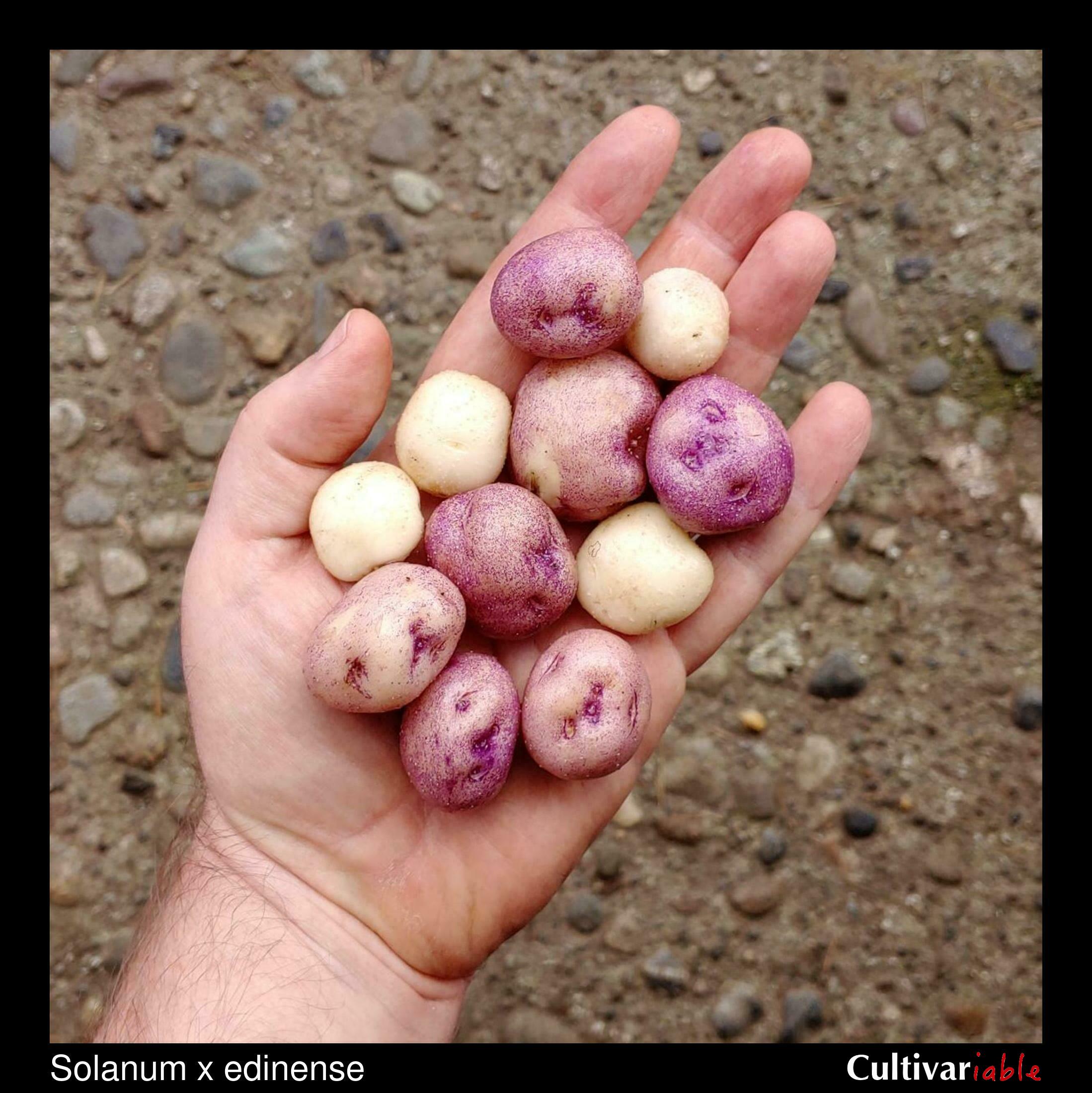
| Common Names | Edinburgh potato, Papa morada |
| Code | edn |
| Synonyms | S. salamanii |
| Clade | 4 |
| Series | Demissa |
| Ploidy | Pentaploid (5x) |
| EBN | 4 |
| Tuberization Photoperiod | Long Day |
| Self-compatibility | No |
| Nuclear Genome | A |
| Cytoplasmic Genome | Unknown |
| Citation | Berthault: Rech. bot. Solanum tub. 142, fig. 41, 42, tab. 8. 1911. |
Description
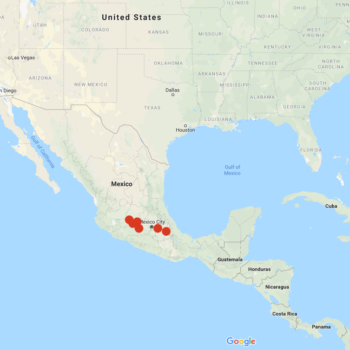
Solanum x edinense is a natural hybrid species from central Mexico, generally found in areas of potato cultivation. It is thought to be a cross of domesticated S. tuberosum x S. demissum. Plants range from three to six feet tall, more similar in form to domesticated potatoes than S. demissum. Flowers are typically blue, less commonly white. Berries are round, similar to the domesticated potato, but often seedless. Some clones appear to be male sterile, while others set small amounts of seed when self-pollinated. Tubers are small, usually less than an inch, and blue or white. The stolons are very long, reaching five feet or more in some accessions.
The specific epithet refers to Edinburgh, Scotland and specifically the botanic garden there, where the species was first described. Its importance as a source of disease resistance was first recognized there when late blight damaged the domesticated potato varieties but left S. x edinense undamaged. While there is no completely standardized pronunciation for scientific names, the most common way to pronounce this species is probably so-LAY-num cross ed-in-EN-see.
This is an interesting example of similar evolutionary outcomes in North and South America. The North American S. demissum is similar in many ways to the South American S. acaule. They are low-growing, hardy, disease resistant polyploids. Both have crossed with the domesticated potato, producing robust pentaploid hybrids. In South America, the hybrid species is S. curtilobum, with two copies of the domesticated genome and three of the S. acaule genome. In North America, the hybrid is S. x edinense, with two copies of the domesticated genome and three of the S. demissum genome. And the plants of both hybrids are quite similar in size and form. Just like with S. curtilobum, the plants are fertile (although generally much less self-fertile than S. curtilobum), but the seedlings do not grow true, instead gradually stabilizing as tetraploid over several generations. So, “true” S. x edinense can only be maintained as clones.
You can read more about the history of S. x edinense in a series of blogs by the Royal Botanic Garden Edinburgh.
Resistances
The resistances of S. x edinense have received little study, but the wild parent, S. demissum, has a wide range of pest and disease resistances and presumably those will be inherited in some of the progeny. S. demissum was used commonly in domesticated potato breeding in the early to mid-20th century as a source of resistance traits.
The accessions that I have grown appear to be virtually immune to the strain(s) of late blight present here.
| Condition | Type | Level of Resistance | Source |
|---|---|---|---|
| Phytophthora infestans (Late Blight) | Fungus | Resistant |
Glykoalkaloid content
No information, but intentional crosses between the putative parent species have generally segregated for glycoalkaloid content, with some palatable progeny. In my experience, tubers range from non-bitter to slightly bitter and I would consider the accessions that I have tasted to be edible, although the tubers are small.
Images
Cultivation
Growing considerations for this species are the same as for domesticated potato, although stolons the stolons are very long, which makes it a good idea to grow this species in pots.
Most accessions self pollinate poorly, producing few berries with few seeds. When pollinated with tetraploid potato pollen, they produce more berries, but the seed counts remain fairly low. Twelve seeds per berry is my best average so far.
Accessions Evaluated
The following accessions were examined to prepare this profile. I have evaluated 3/6 accessions currently available from the US Potato Genebank.
PI 607474
Collected Nevado de Toluca, Mexico in 1997. Mostly purple stems. Flower closer to S. tuberosum. Round berries. Light blue skin.
PI 611082
Collected SW of Toluca, Mexico in 1997. Mostly green stems. Flower closer to S. demissum. Pointed berries. White skin.
PI 619159
Collected in El Capulin, Mexico in 1997. Mostly purple stems. Flower closer to S. tuberosum. Round berries. Light blue skin.
Breeding
This was one of the first wild potato species used in breeding with the domesticated potato. The variety Brennragis, a S. x edinense x S. tuberosum hybrid, was released in 1936 (Ross 1966). S. x edinense was used as the foundation of the German W (for “wild”) races of potatoes, contributing S. demissum genetics with late blight resistance. Varieties that were bred from the W races include Acadia Russet, Agassiz, Alamo, Allagash Russet, Arenac, Atlantic, Avon, Bake King, Belchip, Belleisle, Bison, Blanca, Campbell 11, Campbell 12, Campbell 14, Caribe, Carlton, Catoosa, Centennial Russet, Chinook, Chipbelle, Crystal, Denali, Elba, Emmet, Erik, Fundy, Grand Falls, Hampton, Highlat Russet, Hudson, Hunter, Islander, Jemseg, Jewel, Krantz, Lemhi Russet, Lenape, Nampa, Navajo, Nooksack, Norchief, Norking Russet, Onaway, Oneida, Pennrose, Redsen, Reliance, Rhinered, Russette, Sable, Seminole, Shepody, Shoshoni, Simcoe, Snowflake, Sunrise, Superior, Targhee, Trent, Wischip, Yankee Chipper, Yankee Supreme, and York (Plaisted 1989).
In the process of recapitulating this hybrid at the Royal Botanic Garden Edinburgh, they found success using S. demissum only as the female parent (Coleman 2018). They also noted possible cases of hybrid necrosis in the progeny (Coleman 2019). Cytoplasm type has not been reported for this species, but the facts that only S. demissum x S. tuberosum crosses were successful and that some of the W race progeny have been typed as having type D cytoplasm strongly suggests that this species has type D cytoplasm inherited from S. demissum.
EBN has not been reported for this species, but there is reasonably good evidence that it must be 4EBN. It crosses readily with 4EBN domesticated tetraploids. Also, as a pentaploid, it must be carrying two copies of the domesticated potato genome from its tetraploid domesticated parent, which will have 1/2:1/2 EBN alleles, and three copies of the S. demissum genome from its wild parent. S. demissum is a hexaploid with 4EBN, which means that it must carry four copies of the genome that have 1/2:0 EBN alleles and two copies with 1/2:1/2. Adding together the gametes, we would get 1/2:1/2+1/2:1/2+1/2:0+1/2:0+1/2:1/2, for a total of 4EBN. It is more interesting to speculate on the self-pollinated progeny of S. x edinense. We should expect the progeny to gradually lose the extra, unpaired set of chromosomes, which I would expect to be the unpaired 1/2:1/2 genome from S. demissum. That means that, as the progeny shed chromosomes and stabilize toward tetraploidy, they would likely be 3EBN tetraploids. This may help to explain the poor seed set in this species.
Crosses with S. tuberosum
| Female | Male | Berry Set |
Seed Set | Germ | Ploidy | Source |
|---|---|---|---|---|---|---|
| S. x edinense | S. tuberosum 4x | Yes | Yes | Yes | 4x+ |
Crosses with other species
| Female | Male | Berry Set |
Seed Set | Germ | Ploidy | Source |
|---|---|---|---|---|---|---|
| S. commersonii 3x | S. x edinense |
Yes | Yes | Yes | Broili 1921 |
References
Solanum x edinense at Solanaceae Source
2 thoughts on “Solanum x edinense”
Comments are closed.


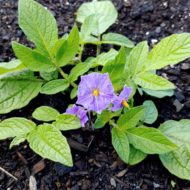

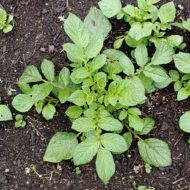
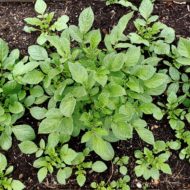
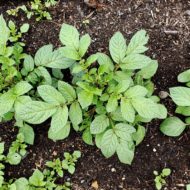
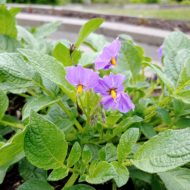
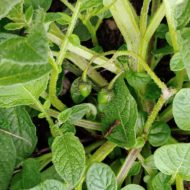
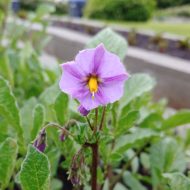
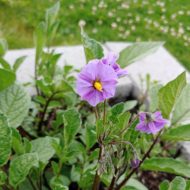
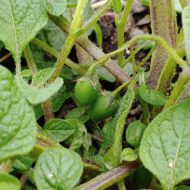
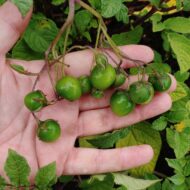

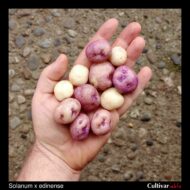

At the Royal Botanic Garden Edinburgh we have produced Solanum x edinense by controlled crossing using demissum as mother plants and couple of tuberosum cultivars as fathers. An interesting result has been that the vast majority of offspring show hybrid necrosis. We only have a few good plants. The first has flowered today and is without doubt the desired hybrid.
Neat! Thanks for checking in. What is your goal for the hybrids?